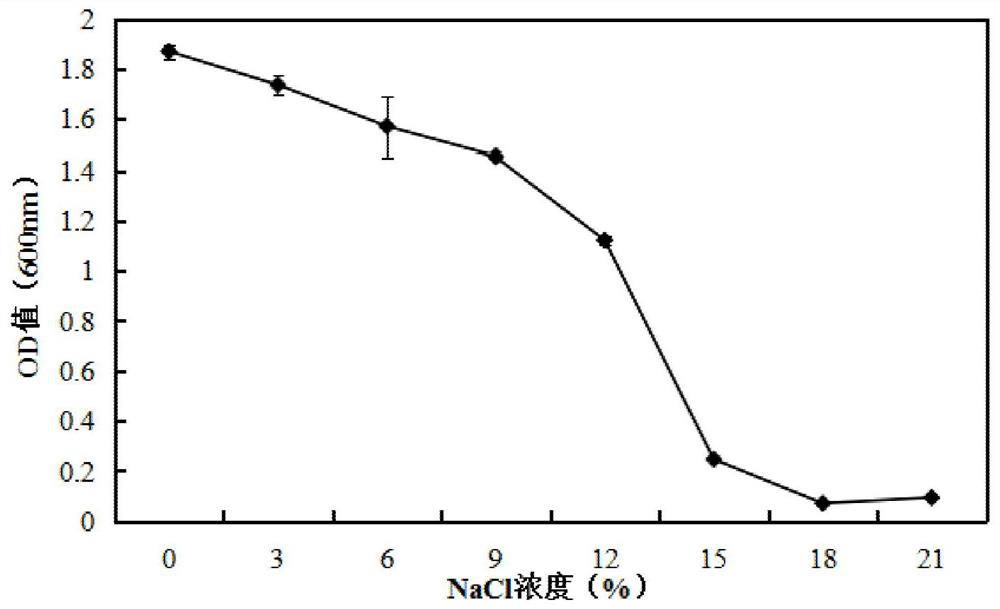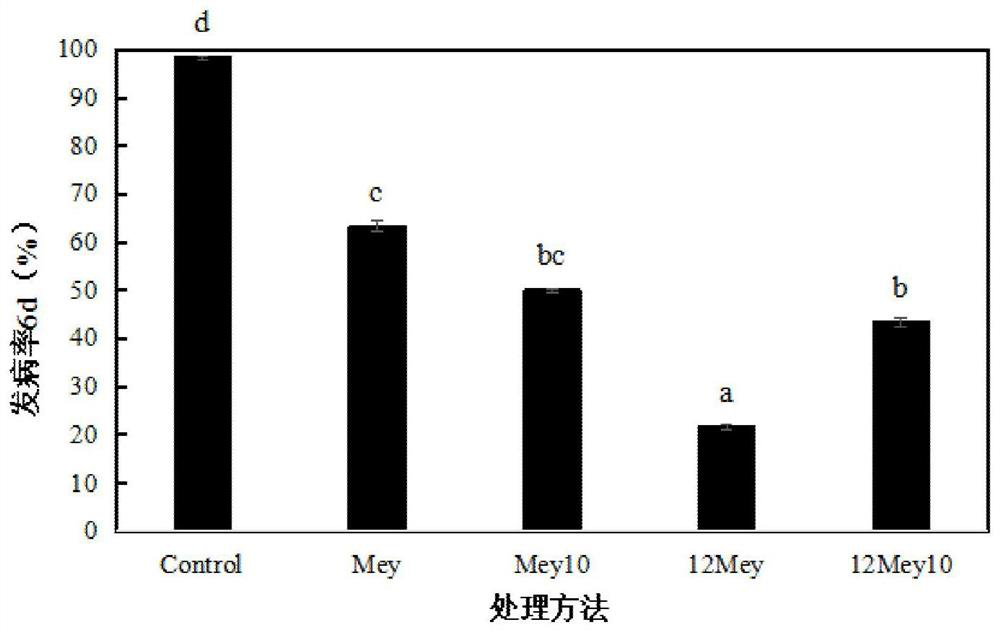Suspension of Pichia japonica for controlling postharvest disease of cherry tomato fruit
A technology for cherry tomato and postharvest diseases, applied in the directions of yeast-containing food ingredients, microorganism-based methods, applications, etc., can solve the serious harm to human health and environmental safety of chemical fungicides, the resistance of pathogenic microorganisms, and affect the effect of disease prevention and control. and other problems to achieve the effect of reducing the incidence of Botrytis cinerea, improving the direct inhibitory effect and cost-effective
- Summary
- Abstract
- Description
- Claims
- Application Information
AI Technical Summary
Problems solved by technology
Method used
Image
Examples
Embodiment 1
[0026] Embodiment 1, the screening of Pichia quaternary yeast yeast:
[0027] Select the sea sand of the Sansha Islands in Hainan Province;
[0028] The culture reagent is Tiger Red (Red Bengal) medium;
[0029] The culture screening conditions are: weigh 10 g of sea sand, add 100 mL of sterile water, shake at 200 r / min for 30 min, and then absorb the supernatant, and then dilute the supernatant gradient with sterile water for 10 and 10 minutes. 2 , 10 3 , 10 4 100 μL were drawn from each gradient and spread evenly on the tiger red medium plate, cultured in the incubator at 28°C for 3 days, selected according to the colony morphology and streaked and purified, and confirmed as yeast by microscopy and PCR amplification by 16s rDNA sequencing. After that, it was stored in the slant of NYDA medium.
[0030] Finally, the strain J-SS-CX was screened out, which was identified by 16s rDNA as Meyerozyma guilliermondii, and its colony characteristics were as follows: round, milky w...
Embodiment 2
[0035] Embodiment 2, the preparation method of Pichia quaternary yeast suspension:
[0036]Pichia quaternary yeast J-SS-CX (CGMCC NO.17240) was stored in NYDA medium at low temperature (4°C), taken out during activation and cultured in NYDA medium at 28°C for 48 hours, and subcultured repeatedly. After 2 times, the activated Pichia moniliformis was added to the NYDB medium with an inoculation loop, cultivated at 200rpm and 28°C for 24h, and then sucked 1 / 50 volume of the culture medium to contain 12% NaCl. In NYDB medium (i.e., bacterial liquid: NYDB medium containing 12% NaCl = 1:50 volume ratio), subculture at 200 rpm and 28 °C for 24 h, collect the culture medium, and at 4000 rpm and 4 °C under the conditions After centrifugation for 15 min, the cells collected by centrifugation were washed twice with sterile distilled water to remove the culture medium. Dilute and resuspend the yeast cells with sterile distilled water, use a hemocytometer to determine the concentration un...
PUM
 Login to View More
Login to View More Abstract
Description
Claims
Application Information
 Login to View More
Login to View More - R&D
- Intellectual Property
- Life Sciences
- Materials
- Tech Scout
- Unparalleled Data Quality
- Higher Quality Content
- 60% Fewer Hallucinations
Browse by: Latest US Patents, China's latest patents, Technical Efficacy Thesaurus, Application Domain, Technology Topic, Popular Technical Reports.
© 2025 PatSnap. All rights reserved.Legal|Privacy policy|Modern Slavery Act Transparency Statement|Sitemap|About US| Contact US: help@patsnap.com


